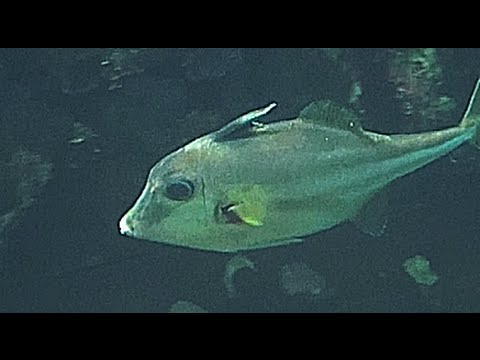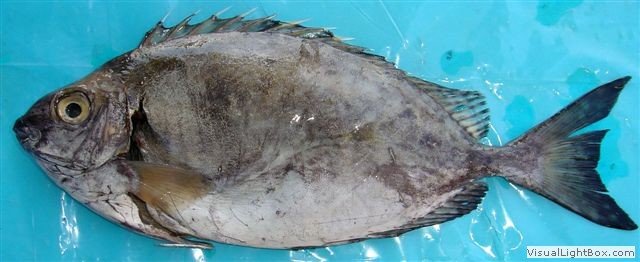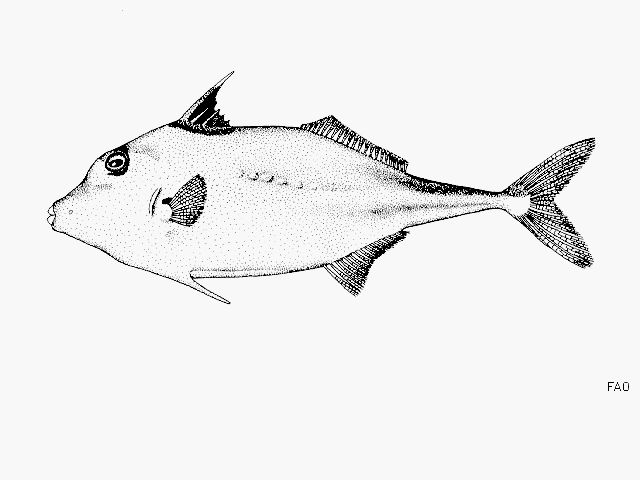
Triacanthus biaculeatus
FAMILY
Triacanthidae
TAXONOMY
Triacanthus biaculeatus Bloch, 1786, East Indies.
OTHER COMMON NAMES
English: Short-nosed tripodfish; Japanese: Gima.
PHYSICAL CHARACTERISTICS
Body oblong and compressed, with a long caudal peduncle, a
deeply forked caudal fin with rounded lobes, a pronounced
snout in the head, and a prominent dorsal spine. The dorsal
fin has 20–26 soft rays, and the anal fin has 13–22 soft rays.
Body color is silvery with a yellowish hue. The caudal fin is
pale yellow and somewhat clear at the lobes. The fins are pale
or milky to clear white, except for the dorsal spine, which is
black at the base. Grows to at least 11.8 in (30 cm) in total
length.
DISTRIBUTION
Indo-West Pacific region from the Persian Gulf east across the
Indian Ocean to the east coast of Australia and north to China
and southern Japan.
HABITAT
A shallow-water bottom-dwelling species in tropical and subtropical
waters. Prefers sand or mudflats of estuaries and inshore
coastal waters. Depth range to 197 ft (60 m).
BEHAVIOR
Not well known.
FEEDING ECOLOGY AND DIET
This species forages for benthic invertebrates.
REPRODUCTIVE BIOLOGY
Not well known but probably has demersal eggs, perhaps in a
nest, with parental care. The larvae are pelagic.
CONSERVATION STATUS
Not listed by the IUCN.
SIGNIFICANCE TO HUMANS
A minor commercial and subsistence species that also is used in
Chinese medicine.
Other popular Animals
Photo Gallery of - Triplespine fish





 Animalia Life
Animalia Life